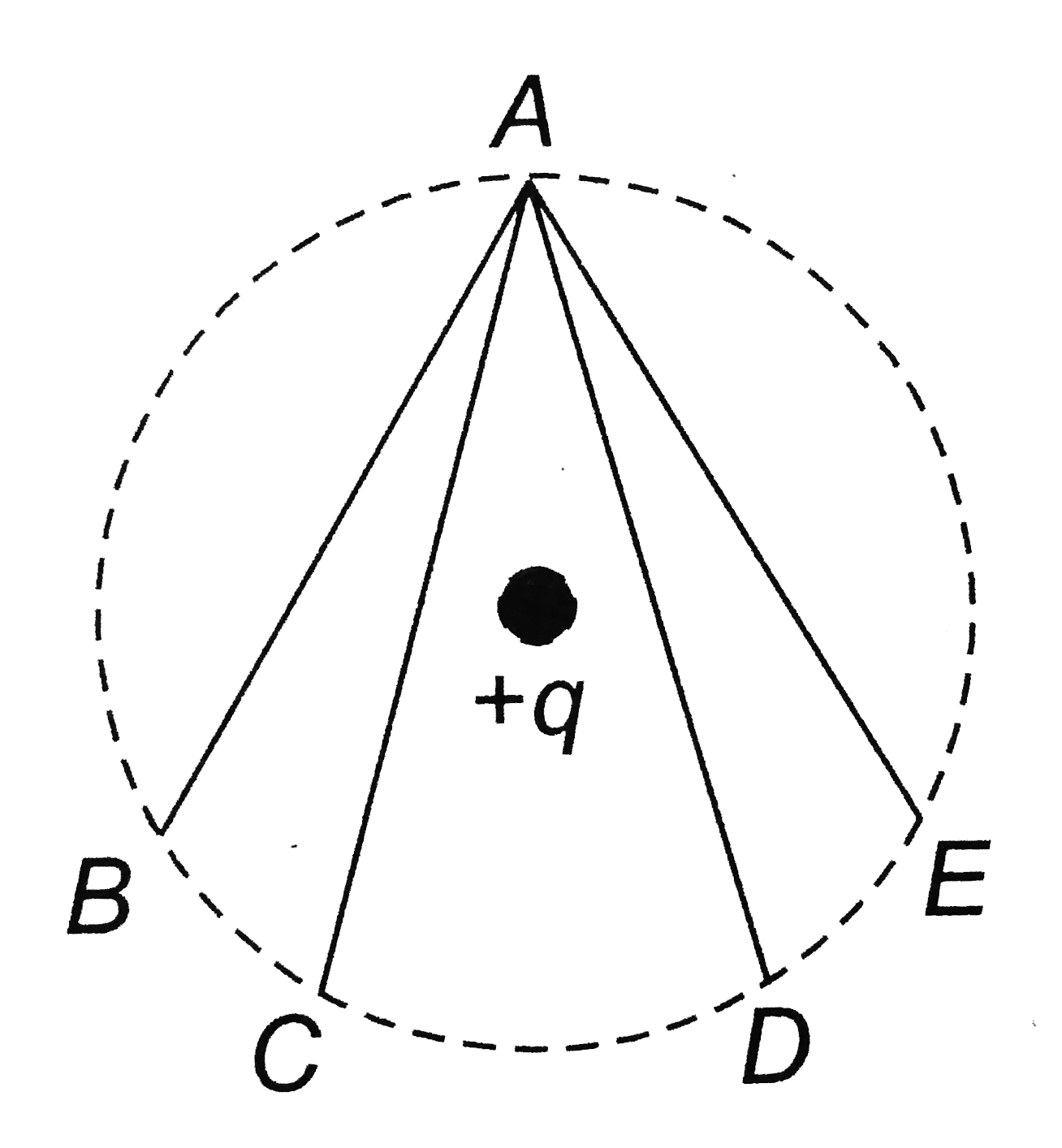A charge is moved in an electric field of a fixed charge distribution from point A to another point B slowly. The work done by external agent in doing so is 100J. What is the change in potential energy of the charge as it moves from A to B ? What is the work done by the electric field of the charge distribution as the charge moves from A to B ?
To solve the problem step by step, we will analyze the given information and apply the relevant concepts from electrostatics.
Step 1: Understand the Work Done by the External Agent
The problem states that a charge is moved from point A to point B slowly, and the work done by the external agent in doing so is given as 100 J.
Step 2: Relate Work Done to Change in Potential Energy
According to the work-energy theorem, the work done by the external agent on the charge is equal to the change in potential energy of the charge. Therefore, we can write:
ΔU=Wexternal
Where:
- ΔU is the change in potential energy.
- Wexternal=100J.
Thus, we have:
ΔU=100J
Step 3: Determine the Work Done by the Electric Field
The work done by the electric field can be determined using the principle of conservation of energy. The total work done (by both the external agent and the electric field) is zero when the charge is moved slowly (meaning no change in kinetic energy).
This can be expressed as:
Wtotal=Wexternal+Welectric=0
From this, we can isolate the work done by the electric field:
Welectric=−Wexternal
Substituting the value of Wexternal:
Welectric=−100J
Final Answers
- The change in potential energy of the charge as it moves from A to B is 100 J.
- The work done by the electric field of the charge distribution as the charge moves from A to B is -100 J.
---
The problem states that a charge is moved from point A to point B slowly, and the work done by the external agent in doing so is given as 100 J.
According to the work-energy theorem, the work done by the external agent on the charge is equal to the change in potential energy of the charge. Therefore, we can write:
- ΔU is the change in potential energy.
- Wexternal=100J.
The work done by the electric field can be determined using the principle of conservation of energy. The total work done (by both the external agent and the electric field) is zero when the charge is moved slowly (meaning no change in kinetic energy).
- The change in potential energy of the charge as it moves from A to B is 100 J.
- The work done by the electric field of the charge distribution as the charge moves from A to B is -100 J.
Topper's Solved these Questions
- ELECTROSTATIC POTENTIAL AND CAPACITORSBOOK - DC PANDEY ENGLISHCHAPTER - ELECTROSTATIC POTENTIAL AND CAPACITORSEXERCISE - Check point 2.1
15 Videos
- ELECTROSTATIC POTENTIAL AND CAPACITORSBOOK - DC PANDEY ENGLISHCHAPTER - ELECTROSTATIC POTENTIAL AND CAPACITORSEXERCISE - Check point 2.2
15 Videos
- ELECTROMAGNETIC WAVESBOOK - DC PANDEY ENGLISHCHAPTER - ELECTROMAGNETIC WAVESEXERCISE - Sec C
22 Videos
- ELECTROSTATICSBOOK - DC PANDEY ENGLISHCHAPTER - ELECTROSTATICSEXERCISE - Medical entrances gallery
37 Videos
Similar Questions
A charge of 10C is moved in an electric field of a fixed charge distribution from point A to another point B slowly. The work done by external agent in doing so is 100J. What is the potential difference VA−VB?
View SolutionA point charge is taken from a point A to a pint B in an electric field. Does the work done by the electric field depend on the path of the charge ?
View Solution
Knowledge Check
Assertion: The energy of charged particle moving in uniform magnetic field does not change.
Reason: Work done by magnetic field on the charge is zero.AIf both assertion and reason are true and reason is the correct explanation of assertion.BIf both assertion and reason are true but reason is the correct explanation of assertion.CIf assertion is true but reason is falseDIf both assertion and reason are false.
Work done by an electrostatic field in moving a given charge from one point to another …… upon the chosen closed path.
View SolutionIn the electric field of a point chargde q, a cetrain charge is carried from point A to B,C,D and E. Then the work done

View SolutionA negative charge is moved by an external agent in the direction of electric field. Then
 .
.
View SolutionWhen a 2μC charge is carried from point A to point B, the amount of work done by the electric field is 50μJ. What is the potential difference and which point is at a higher potential ?
View SolutionA negetive charge is moved by an external agent in the direction of electric field. Then

View SolutionA charge Q is placed at the origin. The electric potential due to this charge at a given point in space is V. The work done by an external force in bringing another charge q from infinity up to the point is
View SolutionA point charge q is rotated along a circle in the electric field generated by anotherj point charge Q. The work done by the electric field on the rotatin charge in one complete revolution is
View Solution
